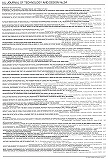Volume 19, Issue 41
Displaying 51-68 of 68 articles from this issue
Rural Planning
-
2013 Volume 19 Issue 41 Pages 283-288
Published: February 20, 2013
Released on J-STAGE: February 20, 2013
Download PDF (2852K)
Urban Planning
-
2013 Volume 19 Issue 41 Pages 289-292
Published: February 20, 2013
Released on J-STAGE: February 20, 2013
Download PDF (1776K) -
2013 Volume 19 Issue 41 Pages 293-298
Published: February 20, 2013
Released on J-STAGE: February 20, 2013
Download PDF (2916K) -
2013 Volume 19 Issue 41 Pages 299-302
Published: February 20, 2013
Released on J-STAGE: February 20, 2013
Download PDF (2677K) -
2013 Volume 19 Issue 41 Pages 303-308
Published: February 20, 2013
Released on J-STAGE: February 20, 2013
Download PDF (2528K) -
2013 Volume 19 Issue 41 Pages 309-314
Published: February 20, 2013
Released on J-STAGE: February 20, 2013
Download PDF (722K) -
2013 Volume 19 Issue 41 Pages 315-319
Published: February 20, 2013
Released on J-STAGE: February 20, 2013
Download PDF (2663K) -
2013 Volume 19 Issue 41 Pages 321-324
Published: February 20, 2013
Released on J-STAGE: February 20, 2013
Download PDF (1274K) -
2013 Volume 19 Issue 41 Pages 325-328
Published: February 20, 2013
Released on J-STAGE: February 20, 2013
Download PDF (856K) -
2013 Volume 19 Issue 41 Pages 329-333
Published: February 20, 2013
Released on J-STAGE: February 20, 2013
Download PDF (943K)
Architecture System and Management
-
2013 Volume 19 Issue 41 Pages 335-338
Published: February 20, 2013
Released on J-STAGE: February 20, 2013
Download PDF (1286K)
History and Theory of Architecture
-
2013 Volume 19 Issue 41 Pages 339-344
Published: February 20, 2013
Released on J-STAGE: February 20, 2013
Download PDF (7227K)
Information Systems Technology
-
2013 Volume 19 Issue 41 Pages 345-350
Published: February 20, 2013
Released on J-STAGE: February 20, 2013
Download PDF (790K)
Education
-
2013 Volume 19 Issue 41 Pages 351-356
Published: February 20, 2013
Released on J-STAGE: February 20, 2013
Download PDF (1563K)
Disaster
-
2013 Volume 19 Issue 41 Pages 357-362
Published: February 20, 2013
Released on J-STAGE: February 20, 2013
Download PDF (923K) -
2013 Volume 19 Issue 41 Pages 363-366
Published: February 20, 2013
Released on J-STAGE: February 20, 2013
Download PDF (656K) -
2013 Volume 19 Issue 41 Pages 367-371
Published: February 20, 2013
Released on J-STAGE: February 20, 2013
Download PDF (511K)
Review
-
2013 Volume 19 Issue 41 Pages 375-386
Published: 2013
Released on J-STAGE: February 20, 2013
Download PDF (944K)
